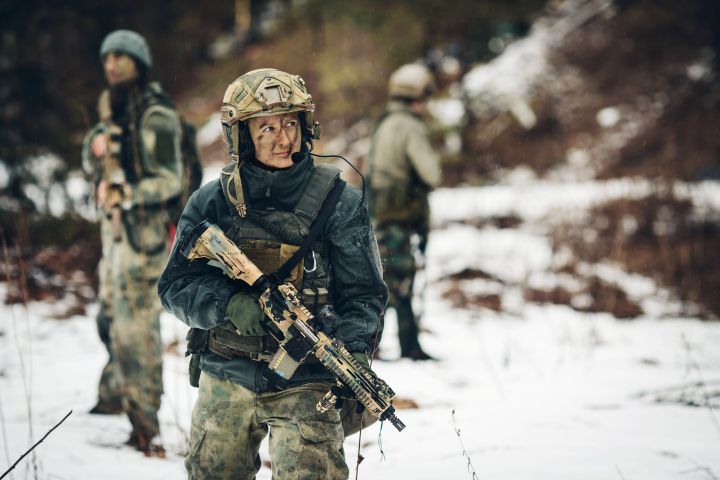
Clothing for the military seems like such a basic provision that it’s a bit shocking that it’s only now being addressed. As Motherboard notes, women have been wearing male-centric armor to dangerous situations in Afghanistan and Iraq for nearly 10 years, and the issue is much more than aesthetics. These supposedly protective coverings failed to accommodate women’s curves, ended up shifting the placement of gear, and simply put, didn’t pay respect to the distinct anatomies of men and women.
“My entire lower pelvis was exposed,” Army Sgt. First Class Elana Duffy, who served from 2003 to 2013 in intelligence told Motherboard. “If the gear was truly meant to protect my reproductive organs, I wouldn’t have been able to bend over.”
So now, the Pentagon is seeking a change, and none too soon. As per reports from the Department of Defense Trauma Registry, more than 53,000 injuries have resulted from explosives in the Iraq and Afghanistan. And many of these injuries affect the genitals, leaving servicemen and women either infertile or forced to reproduce via artificial insemination or in vitro fertilization. As such, creating protective and actually wearable gear is becoming more important than ever.
Still, while progress is on the horizon, it is unlikely that the new gear will be implemented before 2019.
“Sometimes change is too slow, especially in areas as critical as body armor for our deploying troops,” Congresswoman Tammy Duckworth (D-Ill.) told Motherboard. The congresswoman previously served as an Air Force pilot, and is intimately acquainted with the dangers of combat — she was one of the first women to undergo a double leg amputation when her helicopter was struck by a rocket-propelled grenade in 2004. “Undoubtedly some of it could be cultural, but I think it’s mostly bureaucratic. It just takes a long time from when a requirement is first identified to when something can be fielded.”


